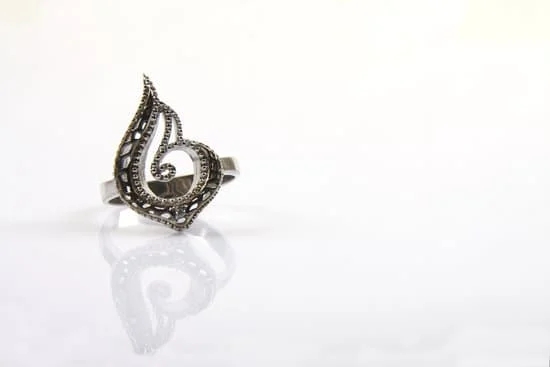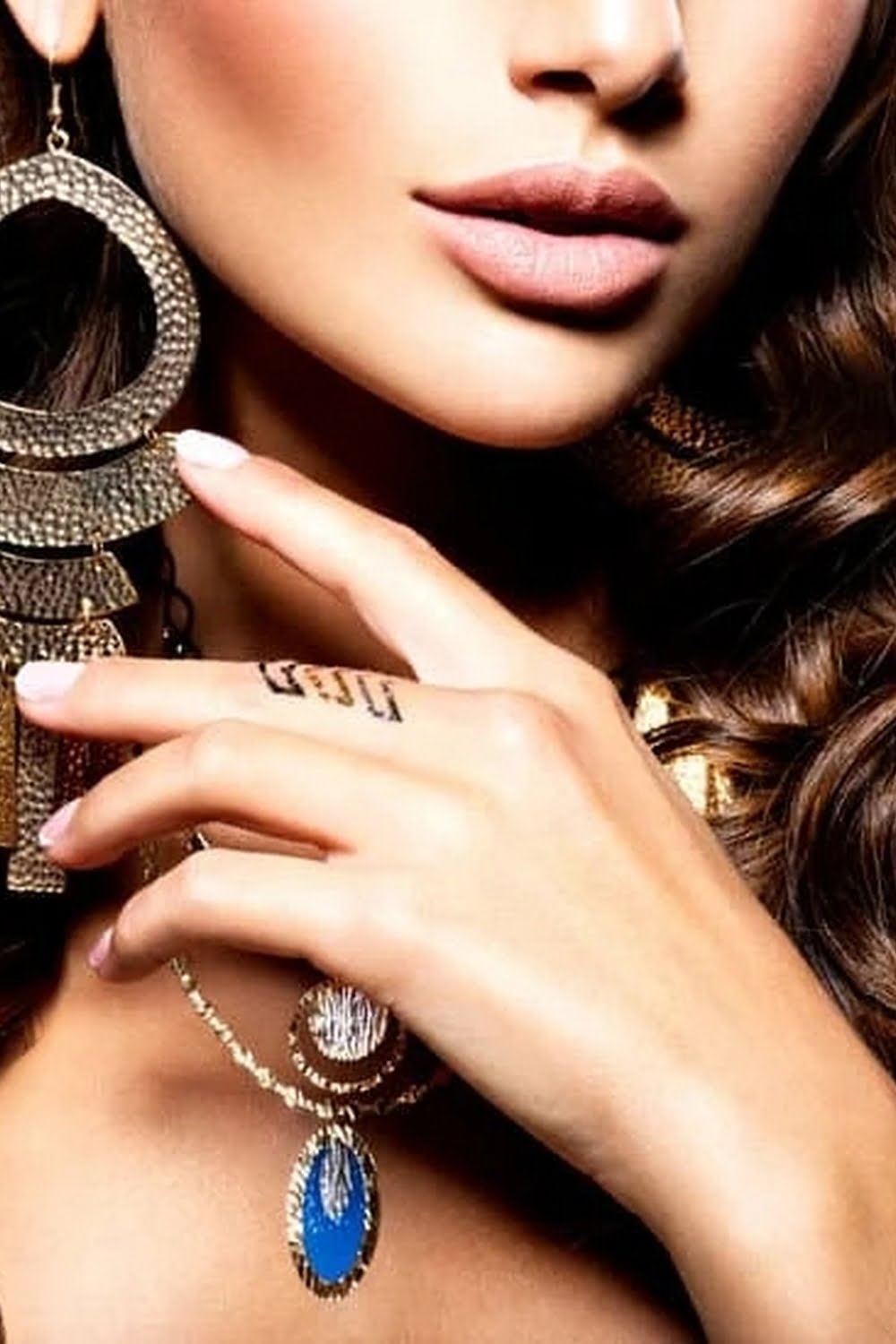Ethically Sourced Fine Jewelry has emerged as a defining trend in the jewelry industry, representing a new era of conscious consumerism. Defined by its commitment to environmentally responsible and socially ethical practices, this movement aims to tackle the dark side of traditional jewelry production while promoting transparency, accountability, and sustainability. With growing awareness and demand for ethically sourced products, consumers are no longer simply captivated by the beauty of a piece; they now seek to understand its origin and impact.
In recent years, the jewelry industry has faced scrutiny over its exploitative mining practices and unethical sourcing methods. It is an unfortunate truth that conventional mining often involves devastating environmental consequences such as habitat destruction and pollution. Furthermore, human rights violations and exploitation of mineworkers have tainted the industry’s reputation. The prevalence of blood diamonds and conflict gemstones perpetuates violence and funds civil wars in certain regions.
However, amidst these concerns lies hope for change. Ethically sourced fine jewelry seeks to revolutionize the industry through transparency and accountability. Brands committed to ethical sourcing embrace supply chain visibility as they trace their materials back to their roots. By working with reputable suppliers who adhere to fair labor practices and responsible mining standards, these brands ensure the ethical production of their exquisite pieces.
The Dark Side of Traditional Jewelry
Many consumers are unaware of the dark side of traditional jewelry, which involves the unethical practices that occur within the industry. Unethically sourced jewelry can have severe negative consequences on both the environment and human rights. This section will shine a light on these issues and provide insight into the horrors behind unethically sourced jewelry.
One of the most significant problems associated with unethically sourced jewelry is exploitative mining practices and their environmental impact. Traditional mining methods often involve destructive techniques such as open-pit mining, which can lead to deforestation, habitat destruction, and water pollution. Additionally, the use of toxic chemicals like mercury and cyanide during extraction processes poses a threat to ecosystems and nearby communities.
Another concerning aspect of unethically sourced jewelry is human rights violations and worker exploitation. Mineworkers, who are often from disadvantaged communities in developing countries, endure hazardous working conditions, long hours, and limited access to safety equipment or healthcare. They also receive low wages compared to the profits generated from their labor. In many cases, child labor is prevalent in these mining operations, denying children their right to education and a proper childhood.
Additionally, another grave concern related to unethically sourced jewelry is the issue of blood diamonds and conflict gemstones. These are precious stones that are mined in war zones or under conditions where human rights abuses occur. The proceeds from the sale of these diamonds or gemstones are used to fund armed conflicts that perpetuate violence and harm local communities.
Overall, it is crucial for consumers to understand the dark side of traditional jewelry production so they can make informed choices about their purchases. By being aware of these issues, individuals can contribute to the demand for ethically sourced fine jewelry that supports sustainable practices and respects human rights.
– Exploitative mining practices:
– Open-pit mining.
– Deforestation.
– Habitat destruction.
– Water pollution.
– Toxic chemicals.
– Human rights violations and exploitation:
– Dangerous working conditions.
– Limited access to safety equipment and healthcare.
– Low wages.
– Child labor.
– Blood diamonds and conflict gemstones:
– Precious stones mined in war zones or areas with human rights abuses.
– Proceeds used to fund armed conflicts.
The Rise of Ethically Sourced Fine Jewelry
Ethical sourcing has become a central focus in the fine jewelry industry, and brands are now emphasizing transparency and accountability in their practices. This shift towards responsible sourcing is driven by growing consumer awareness and demand for ethically sourced products. In this section, we will explore what ethical sourcing really means, how brands are ensuring transparency in their supply chains, and how certifications and standards play a crucial role in identifying ethically sourced fine jewelry.
Ethical Sourcing: What Does it Really Mean?
Ethical sourcing refers to the practice of obtaining raw materials and producing jewelry in a way that prioritizes social and environmental responsibility. This entails ensuring fair wages and good working conditions for all workers involved in the production process, as well as minimizing negative environmental impacts such as pollution or habitat destruction. Ethically sourced jewelry also aims to eliminate the use of materials obtained from conflict zones or with ties to human rights abuses.
Embracing Transparent Supply Chains: How Brands are Ensuring Accountability
To ensure transparency and accountability, many fine jewelry brands are adopting measures to trace their supply chains back to the source. They are building direct relationships with suppliers and miners to have a clear understanding of where their materials come from. These brands often visit mining sites themselves to assess working conditions and ensure compliance with ethical standards. By embracing transparent supply chains, these companies aim to provide consumers with confidence that their products are being sourced responsibly.
Certifications and Standards: Identifying Ethically Sourced Fine Jewelry
Certifications and standards play a vital role in identifying ethically sourced fine jewelry. Various organizations provide certifications that guarantee certain practices and standards have been upheld during the production process. For example, the Responsible Jewellery Council (RJC) certification ensures that companies meet rigorous ethical, social, and environmental requirements.
Other notable certifications include Fairtrade Gold certification and Kimberley Process Certification Scheme for diamonds. These certifications provide consumers with the assurance that the jewelry they purchase has been ethically sourced, allowing them to make informed choices.
By prioritizing transparency and accountability in their practices and seeking certifications, brands in the fine jewelry industry are shaping a new era of ethical sourcing. As consumers become more conscious of the environmental and social impact of their purchases, the demand for ethically sourced fine jewelry is expected to continue growing. The rise of these responsible practices not only benefits workers and local communities but also ensures a sustainable future for the industry as a whole.
Socially Conscious Brands
In recent years, there has been a significant shift in consumer preferences towards socially conscious brands and ethical practices. This trend is particularly noticeable in the jewelry industry, with consumers increasingly seeking out brands that prioritize ethical sourcing and production methods. In this section, we will explore some of the leading brands that are paving the way for ethically sourced fine jewelry.
One example of a brand committed to ethical sourcing is Brilliant Earth. They have built their business model on offering ethically sourced diamonds and gemstones, as well as recycled precious metals. By partnering with mining communities and ensuring fair wages and safe working conditions, Brilliant Earth aims to make a positive impact on both people and the environment.
Another notable brand in the realm of ethically sourced fine jewelry is Catbird. They work diligently to trace their supply chain back to ensure transparency and accountability. Catbird also uses recycled materials whenever possible and supports local artisanal communities by collaborating with skilled craftspeople.
Brands like Vrai & Oro are taking a revolutionary approach to ethical sourcing by focusing on lab-grown diamonds and gemstones instead of mined alternatives. By using sustainably created stones, Vrai & Oro eliminates the environmental impact associated with traditional mining practices while still providing customers with beautiful, high-quality pieces.
These socially conscious brands are leading the charge in reshaping the jewelry industry for the better. They serve as examples of how it is possible to create beautiful pieces without compromising ethical principles or harming our planet. Through their commitment to fair trade, responsible sourcing, and support for local communities, these pioneers of ethically sourced fine jewelry demonstrate that it is indeed possible to create luxury products in an ethical and sustainable manner.
| Brand | Ethical Initiatives |
|---|---|
| Brilliant Earth | – Ethically sourced diamonds and gemstones – Recycled precious metals. – Fair wages and safe working conditions for mine workers |
| Catbird | – Transparent supply chain – Use of recycled materials. – Collaboration with local artisanal communities |
| Vrai & Oro | – Focus on lab-grown diamonds and gemstones – Sustainable alternative to traditional mining practices. – Reduced environmental impact |
Sustainable Materials
Recycled Metals and their Environmental Benefits
One of the key components of sustainable materials in the fine jewelry industry is the use of recycled metals. Recycled metals, such as gold and silver, are derived from existing jewelry pieces, industrial byproducts, and electronic waste. By choosing to use recycled metals, jewelers can significantly reduce the amount of energy and resources required for mining new ores.
The environmental benefits of using recycled metals extend beyond conservation. Mining for precious metals often leads to habitat destruction, water pollution, deforestation, and the emission of greenhouse gases. By opting for recycled metals, jewelers can help alleviate these negative impacts on the environment. Additionally, recycling precious metals also minimizes the need for unethical mining practices that exploit workers or contribute to armed conflicts.
Lab-Grown Diamonds and Gemstones: The Ethical Alternative
Another exciting development in ethically sourced fine jewelry is the rise of lab-grown diamonds and gemstones. Lab-grown diamonds are created in a laboratory environment that mimics the natural process of diamond formation. These diamonds have the same physical, chemical, and optical properties as mined diamonds but without the environmental consequences and human rights concerns associated with traditional diamond mining.
Similarly, lab-grown gemstones offer a sustainable alternative to traditionally sourced gemstones. These gemstones are created through processes that replicate temperature and pressure conditions found in nature. Jewelers who prioritize ethical sourcing can provide customers with a wider range of stunning gemstone options without contributing to harmful mining practices or supporting conflict regions.
Innovative Approaches to Minimize Waste and Environmental Footprint
In addition to using recycled materials and lab-grown stones, many jewelers are adopting innovative approaches to minimize waste and reduce their environmental footprint. Some brands prioritize green manufacturing practices by optimizing production methods to minimize material wastage or implementing strict recycling programs within their facilities. Others embrace design techniques that maximize the use of raw materials, creating less waste overall.
Beyond production, some jewelry brands actively participate in environmental conservation efforts. They invest in reforestation initiatives or contribute to programs that restore and protect ecosystems affected by mining activities. By taking these steps, jewelers are not only shaping a more sustainable future for the industry but also demonstrating their commitment to ethical sourcing and responsible business practices.
The Customer’s Guide to Ethical Shopping
In order to make a positive impact through their purchases, consumers interested in ethical shopping for fine jewelry need to be well-informed. This section provides a guide to help customers make informed choices when it comes to ethically sourced jewelry.
Researching Brands: What to Look For
When researching brands, there are several key factors to consider:
– Supply Chain Transparency: Look for brands that provide detailed information about their supply chain, including where their materials are sourced from and how they ensure ethical practices at every step.
– Environmental Practices: Consider the brand’s commitment to minimizing environmental impact through responsible sourcing and manufacturing processes.
– Labor Standards: Look for brands that prioritize fair wages, safe working conditions, and support the wellbeing of their workers at all stages of production.
Understanding Certifications: Demystifying the Acronyms
Certifications play an important role in identifying ethically sourced fine jewelry. Some key certifications to look out for include:
– Fairtrade Gold: This certification ensures that gold has been responsibly mined and produced by small-scale miners who are rewarded with fair pay and safe working conditions.
– Responsible Jewelry Council (RJC): The RJC certification guarantees that an entire supply chain meets the highest standards in terms of human rights, labor practices, environmental management, and product disclosure.
– Kimberly Process Certification Scheme (KPCS): When it comes to diamonds, the KPCS aims to prevent conflict diamonds from entering the market by ensuring that they have been sourced from ethical origins.
Tips for Identifying Unethical Practices and Supporting Ethical Brands
To identify unethical practices and support ethical brands, consumers can consider the following:
– Read Reviews and Consumer Feedback: Research other customers’ experiences with the brand, including any concerns raised about ethical practices or transparency.
– Seek Sustainable Materials: Opt for jewelry made from recycled metals or lab-grown diamonds and gemstones, which have a lower environmental impact compared to traditionally-mined options.
– Support Brands with Strong Corporate Social Responsibility (CSR): Look for brands that actively engage in community development, support artisanal miners, or collaborate with NGOs to drive positive social change.
By following these guidelines, customers can feel confident in their choices and contribute to the growth of the ethical fine jewelry industry.
The Impact of Ethically Sourced Fine Jewelry on Local Communities
Ethically sourced fine jewelry not only benefits the environment and ensures fair labor practices, but it also has a significant impact on local communities. Through responsible sourcing and partnerships with local artisans and mining communities, ethical brands are able to create positive social change and contribute to sustainable economic development.
One of the key ways in which ethically sourced fine jewelry impacts local communities is by empowering mineworkers and artisans. Traditionally, mineworkers in the jewelry industry have been subjected to dangerous working conditions, low wages, and lack of basic rights.
Ethical brands are committed to ensuring fair wages, safe working conditions, and providing opportunities for skill development and training. By investing in the wellbeing of mineworkers and artisans, these brands contribute to poverty alleviation and empower individuals to improve their quality of life.
In addition to individual empowerment, ethically sourced fine jewelry also contributes to sustainable economic development and community growth. When brands prioritize ethical sourcing practices, they often form long-lasting partnerships with mining communities or cooperatives. This support helps these communities develop alternative sources of income beyond mining.
For example, some ethical brands work with local artisans to create unique handcrafted pieces using traditional techniques. By diversifying income streams and promoting economic resilience, ethical brands help foster self-sufficiency within these communities.
CASE STUDY:
One inspiring example of the positive impact that ethically sourced fine jewelry can have on local communities is the partnership between an ethical jewelry brand called “Sparkle & Shine” and a cooperative of female gemstone miners in Tanzania. Prior to this collaboration, these women faced immense challenges – from poor working conditions to gender discrimination within the industry.
Through their partnership with Sparkle & Shine, the women were provided with essential safety training, protective equipment, and fair wages for their work. The brand also helped them set up a gem-cutting facility within their community so that they could process the stones locally instead of exporting them raw.
As a result of this collaboration, the miners are now able to earn a stable income and support their families. The gem-cutting facility has also created additional job opportunities in the community. Furthermore, Sparkle & Shine ensures that a portion of the proceeds from every piece sold goes back to community development projects, such as building schools and providing clean water access.
This case study showcases how ethical sourcing practices can transform the lives of individuals and contribute to sustainable development at the community level. Ethically sourced fine jewelry has the power to create lasting change by empowering local communities and fostering economic growth.
Beyond Fair Trade
The intersection of ethical fine jewelry and sustainable fashion is a powerful force that is shaping the future of the industry. As consumers become more conscious of the social and environmental impact of their purchases, there has been a growing demand for products that align with their values. This demand has given rise to the ethical fashion movement, which seeks to promote transparency, fairness, and sustainability throughout the entire supply chain.
Ethical fashion movements go beyond fair trade practices by advocating for systemic change within the fashion industry. They aim to address issues such as child labor, unsafe working conditions, and environmental degradation. These movements recognize that sustainability is not just about using eco-friendly materials, but also about promoting social justice and economic empowerment.
In recent years, ethical fine jewelry brands have emerged as leaders in this movement. These brands prioritize responsible sourcing practices and work towards creating a positive social impact at every stage of production. By collaborating with local communities and supporting artisanal craftsmanship, they ensure that their pieces are not only beautiful but also contribute to sustainable economic development.
The future of fine jewelry lies in embracing these ethical fashion movements. Consumers now want more than just a stunning piece of jewelry; they want to know that it was made ethically and sustainably. With increased awareness and demand for transparency from consumers, it is expected that more brands will adapt to these principles in order to stay relevant in the market.
To sum up, ethical fashion movements are shaping the future of fine jewelry by challenging traditional practices and advocating for sustainability and fairness throughout the supply chain. Ethical fine jewelry brands are leading this movement by prioritizing responsible sourcing practices and creating positive social impact. As consumers continue to drive industry transformation through their choices, it is clear that the future of fine jewelry lies in embracing these ethical principles.
Conclusion
In conclusion, the rise of ethically sourced fine jewelry marks a new era in the industry that prioritizes transparency, accountability, and social impact. As consumers become more aware and demand for ethical practices grows, brands are stepping up to embrace change. By understanding the dark side of traditional jewelry and opting for ethically sourced alternatives, individuals have the power to drive transformation within the industry and create a better world.
One of the key aspects of ethically sourced fine jewelry is its commitment to transparency and accountability. Brands are striving to ensure that their supply chains are fully transparent, allowing consumers to trace the journey of their jewelry from mine to market. This transparency not only assures customers that their purchases are ethically made but also holds brands accountable for their sourcing practices.
Certifications and standards play a crucial role in identifying ethically sourced fine jewelry. These designations provide assurance that responsible practices have been followed throughout the entire production process. By familiarizing themselves with these certifications and understanding what they signify, consumers can make informed choices and support brands that align with their values.
Ultimately, choosing ethically sourced fine jewelry goes beyond individual style preferences – it is about making a positive impact on local communities and minimizing harm to the environment. By empowering mineworkers and artisans, fostering sustainable economic development, and reducing waste through innovative approaches, ethical brands contribute to social progress on a larger scale.
As we move towards a future where conscious consumerism is at the forefront of our shopping habits, embracing ethically sourced fine jewelry becomes a powerful statement of values. By supporting ethical brands and demanding change from those lagging behind, individuals hold immense power in redefining what luxury truly means.
Together, we can inspire change within the industry and create a world where beauty is not achieved at the expense of human rights or environmental degradation-a world where every piece of fine jewelry tells a story of empowerment, responsibility, and hope.

Welcome to my jewelry blog! My name is Sarah and I am the owner of this blog.
I love making jewelry and sharing my creations with others.
So whether you’re someone who loves wearing jewelry yourself or simply enjoys learning about it, be sure to check out my blog for insightful posts on everything related to this exciting topic!





